- National poverty rate at 25.6% remains largely unchanged; BISP partially cover living costs but structural challenges hinder poverty reduction
Researchers analysed that access to social protection programme is critical to provide vital support for millions of people facing poverty, crises and life’s uncertainties. It assists protect people against shocks today and build resilience and human capital to make the most of tomorrow. Social protection goes well beyond direct cash or in-kind support; it includes strategies and programs that bridge skill, financial, and information gaps, assisting households and workers manage crises, escape poverty, navigate transitions, and seize career opportunities.
Statistics showed that over the past two decades, the World Bank Group’s social protection and labour programmes have been helping over 222 million people across 72 countries. As of April 2025, the World Bank is providing $29.5 billion in financing, including $15.5 billion through IDA, to respond to the growing demand for social protection solutions amidst overlapping global crises. No doubt, Social safety net (SSN) programs play a major role in enhancing living standards, reducing vulnerability, and breaking the cycle of poverty.
The present global crises have further emphasized the significance of effective social protection systems, which serve as critical buffers against poverty, unemployment, illness, and other livelihood shocks. Government-led interventions, supported through non-governmental organizations and international donors, are essential in building a resilient society. These safety nets not only offer immediate relief but also foster long-term stability and opportunities.
In conclusion, a well-functioning and inclusive social safety net system is not just a legal and moral obligation. It is a strategic investment in a nation’s future. According to HDR, Pakistan falls under the ‘low’ human development category. In 2022, Pakistan’s Human Development Index (HDI) value was recorded 0.54, ranking 164 out of 192 countries worldwide.
In 2023, Pakistan ranked at 168th position (04 points below) but it fell by 19 points on the basis of formula of GNI per capita rank minus HDI rank. The report highlights that Iceland is ranked first in human development, with Norway and Switzerland following closely in second and third place. However, within the South Asian region, Pakistan’s HDI ranking is lower than that of Iran (75th), China (78th), Sri Lanka (89th), Maldives (93rd), Bhutan (125th), Bangladesh & India (130th), Nepal (145th), and Afghanistan trails behind at 181st place. The HDR also offers the annual average HDI growth and trend between1990-2023.
Looking at specific indicators, Pakistan has a life expectancy at birth of 67.5 years, with expected years of schooling at 7.9 and a gross per capita national income (2021 PPP US$) of US$ 5,501. This fall is attributed to a combination of factors, including persistent social, economic, and political pressures, corruption, the lingering effects of past crises, and a slowdown in economic progress. Our country stands out as one of the few developing nations explicitly recognizing social security as a constitutional right.
Article 38 of the Constitution of the Islamic Republic of Pakistan mandates the state to offer social security, housing, food, clothing, healthcare, and education to all citizens, without discrimination based on caste, race, creed, or gender. The Government of Pakistan implements various SSN programs by a range of institutions like BISP, PPAF, Zakat, PBM, EOBI, and WWF.
Additionally, specialized financial institutions offer micro-finance services to those facing economic disadvantages. Moreover, to support long-term economic growth, the government of Pakistan has introduced a series of structural reforms under a new IMF-supported program. These include fiscal consolidation, the privatization of state-owned enterprises (SOEs), reforms in the power sector, and initiatives to improve the overall business environment. A flagship initiative in this effort is URAAN Pakistan, a five-year economic blueprint unveiled in December 2024, which is closely aligned with the Prime Minister’s Economic Transformation Agenda.
Economic survey of Pakistan FY2025 showed that the UNDP’s World Economic Situation and Prospects 2025 projected global economic growth at 2.8 percent in 2025 and 2.9 percent in 2026, supported by monetary easing, recoveries in the EU and Japan, and strong growth in two Asian countries. Inflation continues to fall from 5.6 percent in 2023 to 4.0 percent in 2024, with a further drop to 3.4 percent expected in 2025 driven by easing food and energy prices, though it remains sticky in housing and services in advanced economies.
Public debt reached 95.1 percent of global GDP by the end of 2024, with debt servicing costs rising to 8.5 percent of fiscal revenues. Most central banks have shifted to monetary easing, with 67 out of 108 lowering policy rates by late 2024. The world’s prevalence of moderate or severe food insecurity in the total population edged down marginally from 29.1 percent in 2021 to 28.9 percent in 2023, remaining higher than the 25 percent recorded in 2019. Growth in the volume of global trade has rebounded, increasing from 0.9 percent in 2023 to an estimated 3.4 percent in 2024, driven by the recovery of merchandise trade.
After a two-year slump, investment has grown by an estimated 3.4 percent globally in 2024. Notably, global extreme poverty has returned to pre-pandemic levels in 2024. Despite positive trends, long-term global growth remains below the pre-pandemic average (3.2 percent) because of persistent risks: high debt, fiscal pressures in emerging markets, geopolitical tensions, climate shocks, demographic shifts, and low productivity growth. The World Bank’s Pakistan Development Update-2025 highlights persistent poverty, with the national poverty rate at 25.6 percent in FY 2025 largely unchanged from FY 2024. Economic stagnation, negative growth in key low-income sectors, and declining real wages contribute to this trend.
As the population grows by 2 percent yearly, around 1.9 million more people may fall into poverty in FY 2025. Social protection programmes like BISP have expanded which cover the living costs partially. Structural challenges, including high youth (37 percent) and female (62 percent) NEET rates, and a low employment-to-population ratio (49.7 percent), hinder poverty reduction.



